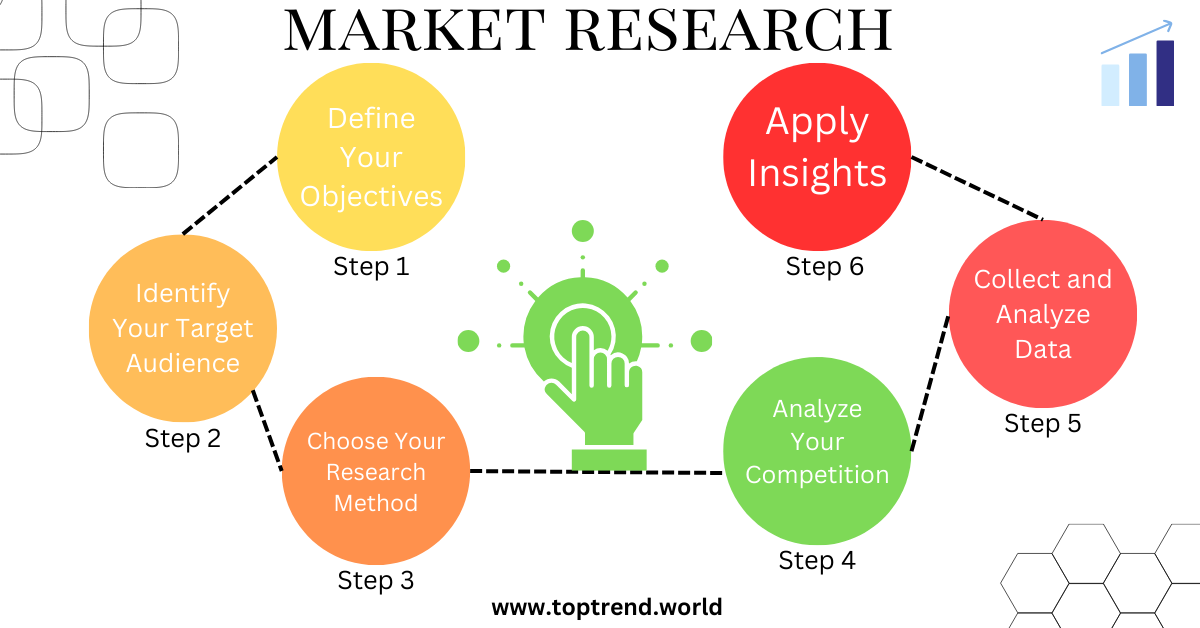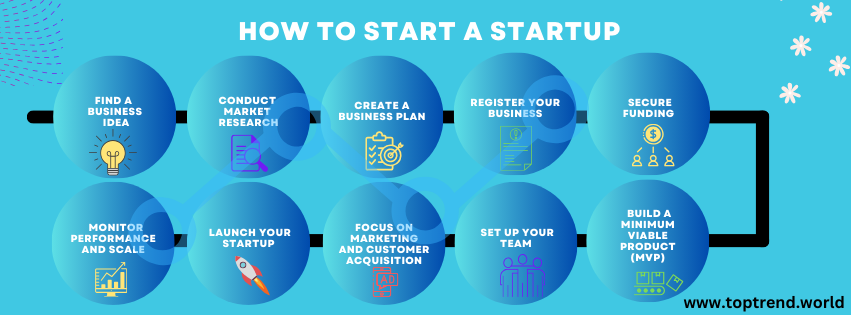
Starting a business is exciting, but it also comes with a lot of challenges. One of the key factors that can determine the success of your startup is market research. Conducting thorough market research gives you the insights needed to make data-driven decisions, minimize risks, and develop products or services that truly resonate with your target audience.
In this step-by-step guide, we’ll explore the essentials of market research for startups, covering everything from understanding your market to analyzing competitors, so you can build a solid foundation for your business.
how to start your starttup step by step guide
Why Market Research is Crucial for Startups
For startups, the stakes are high. The failure rate for startups is around 90%, often due to a lack of understanding of the market and customers. Market research helps you:
- Understand your audience: Learn who your customers are, what they need, and how your product can solve their problems.
- Spot trends: Stay ahead of the competition by identifying emerging trends in your industry.
- Minimize risks: Make informed decisions by relying on data, not just intuition.
- Measure demand: Assess whether there’s a demand for your product or service before investing heavily in development or marketing.
Now that we’ve established why it’s important, let’s dive into the step-by-step process.
Step 1: Define Your Objectives
Before diving into research, it’s essential to clearly define the purpose. Ask yourself what you want to achieve with the research. Are you looking to understand customer needs, validate a business idea, or identify market opportunities? Having well-defined objectives will guide the entire process and ensure you gather relevant data.
Example objectives for startups:
- Validate a product or service idea
- Identify your target market
- Analyze competitors
- Determine pricing strategies
Step 2: Identify Your Target Audience
Knowing who your customers are is key to conducting effective market research. Define the demographic and psychographic characteristics of your target audience. Think about their age, gender, income level, location, buying behavior, and interests. This will help you focus on gathering data that’s directly relevant to your potential customers.
Tools to define your audience:
- Google Analytics: For understanding website traffic demographics.
- Social media insights: Platforms like Instagram, Facebook, and LinkedIn offer audience data.
- Surveys and polls: Ask direct questions to gather audience information.
Step 3: Choose Your Research Method
There are two main types of market research: primary research and secondary research. Depending on your goals, you may need to use one or both.
- Primary Research: This involves collecting first-hand data directly from your audience. Methods include surveys, interviews, focus groups, and product testing.
- Secondary Research: This involves analyzing data that has already been collected by others, such as industry reports, government data, and research papers. It’s a great way to get an overview of market trends and competitor activities.
Popular tools for conducting research:
- SurveyMonkey: For creating surveys and gathering customer feedback.
- Google Trends: To spot trending topics and customer interest over time.
- Statista: For accessing industry data and market reports.
Step 4: Analyze Your Competition
Competitor analysis is a critical part of market research for startups. You need to understand what similar businesses are doing and how they’re succeeding or failing. Competitor analysis provides insights into market gaps, pricing strategies, and customer preferences.
Steps for effective competitor analysis:
- Identify direct competitors: Look for businesses offering similar products or services.
- Analyze their strengths and weaknesses: Study their marketing, pricing, customer service, and product features.
- Understand their market position: Look at their brand reputation, customer loyalty, and market share.
Tools for competitor analysis:
- SEMrush: For website traffic analysis and SEO insights.
- SimilarWeb: To analyze web traffic and engagement data for competitors.
- Ahrefs: For backlink and SEO performance analysis.
Step 5: Collect and Analyze Data
Once you’ve gathered enough data, it’s time to analyze it. Look for patterns, trends, and key insights that align with your objectives. For example, if you conducted surveys, what percentage of respondents expressed interest in your product? What pain points did they highlight? What are your competitors’ weak spots?
Tips for analyzing data:
- Segment your data: Break it down by demographics, buying behavior, or preferences to get a clearer picture of specific groups.
- Look for actionable insights: Focus on data that helps you make business decisions, like product improvements, pricing, or marketing strategies.
- Use data visualization: Tools like Google Data Studio or Tableau can help visualize complex data for easier interpretation.
Step 6: Apply Insights to Your Startup Strategy
Now that you have a wealth of insights from your market research, it’s time to put them into action. Use your findings to refine your product, adjust your pricing, craft targeted marketing campaigns, or even pivot your business model if needed.
How to apply your research findings:
- Product Development: If your research shows unmet needs, consider tweaking your product or service to address those gaps.
- Marketing and Branding: Tailor your messaging to resonate with the preferences and pain points of your target audience.
- Business Planning: Use the data to guide your business decisions, such as market entry strategies or expansion plans.
Conclusion
Conducting thorough market research is an invaluable step for any startup. It helps you understand your customers, stay ahead of competitors, and make informed business decisions. By following the step-by-step guide outlined here, you can leverage market research to set your startup on the path to success.
Invest time in research, gather data, and use the insights to build a strong, sustainable business model that meets market needs and drives growth. With the right research, your startup will have a solid foundation to thrive in the competitive business landscape.
Key Takeaways:
- Clearly define research objectives to focus your efforts.
- Understand your target audience’s demographics and needs.
- Use a mix of primary and secondary research methods.
- Analyze competitors to uncover opportunities.
- Apply insights to improve your startup strategy and decision-making.
This step-by-step guide will help ensure your startup is data-driven, customer-focused, and set up for long-term success!



